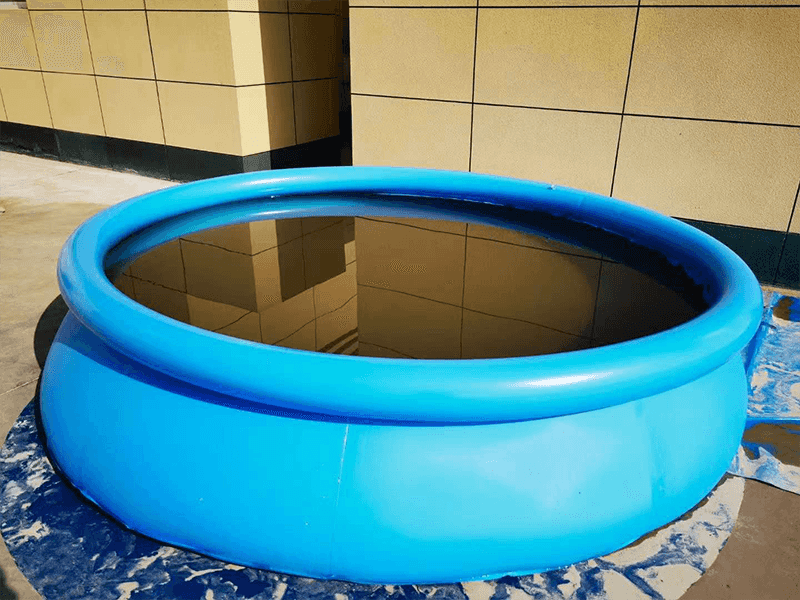Cleaning and maintaining your PVC Flexible Water Tank is key to ensuring its long-term performance and service life. Here are some professional tips covering cleaning steps, maintenance methods and precautions:
Cleaning Steps
(1) Drain the Tank
Before cleaning, make sure the water in the tank is completely drained.
If the tank is used to store drinking water, it is recommended to clean the residue with a clean cloth or soft brush after draining.
(2) Use a mild detergent
Recommended detergent: Use a mild neutral detergent (such as diluted dishwashing liquid or special tank cleaner). Avoid using strong acids, strong alkalis or detergents containing abrasive ingredients to avoid damaging the PVC surface.
Cleaning Method:
Mix an appropriate amount of detergent with clean water and pour it into the tank.
Gently wipe the inner wall of the tank with a soft cloth, sponge or long-handled brush to ensure that all areas are covered.
For hard-to-reach areas, a special tank cleaning ball or tool can be used.
(3) Rinse it clean
Rinse the inside of the tank thoroughly with clean water to ensure that no detergent residue is left.
If the water tank is used to store drinking water, it is recommended to rinse it several times to remove all possible chemical residues.
(4) Disinfection (optional)
If the water tank has not been used for a long time or has stored contaminants, it can be disinfected:
Soak the water tank in food-grade bleach (usually diluted at a ratio of 1:100) or a special disinfectant.
After soaking for 30 minutes, rinse it with plenty of clean water.
(5) Drying
Try to dry the water tank in the air or wipe it with a clean cloth to prevent moisture retention and mold or bacterial growth.
If the water tank can be folded or rolled up, it should be fully unfolded after cleaning to ensure uniform drying.
Maintenance method
(1) Regular inspection
Inspection frequency: It is recommended to conduct a comprehensive inspection every 3-6 months.
Inspection content:

Appearance inspection: Observe the water tank for cracks, scratches or signs of aging.
Seal inspection: Make sure there are no leaks at seams and joints.
Support structure inspection: If the water tank is installed on a bracket, check whether the bracket is stable.
(2) Prevent UV aging
If the water tank is exposed to sunlight for a long time, it is recommended to use a sunshade or place it in a cool place to reduce the impact of UV on the PVC material.
Water tanks made of PVC material with UV stabilizers can be selected to extend the service life.
(3) Control water quality
Avoid storing highly corrosive liquids (such as acidic or alkaline solutions) to avoid damaging the PVC material.
If storing water containing particulate matter or impurities, it is recommended to install a filter at the water inlet to prevent sediment accumulation.
(4) Prevent excessive stretching or folding
Although PVC flexible water tanks have good flexibility, excessive stretching or frequent folding may cause material fatigue and reduce service life.
When transporting or storing, try to avoid sharp objects contacting the surface of the water tank.
Precautions
(1) Avoid chemical contact
Do not allow the water tank to come into contact with solvents, oils or other chemicals that may dissolve or damage PVC.
If special liquids must be stored, please confirm the compatibility of the liquid with the PVC material first.
(2) Control temperature
PVC materials may lose flexibility or become brittle when exposed to extremely high or low temperatures. Ensure that the water tank is used within the recommended operating temperature range (usually -10°C to 60°C).
(3) Prevent microbial growth
If the water tank has not been used for a long time, it is recommended to drain and clean it regularly to prevent microbial growth in the water.
When storing drinking water, it is recommended to change the water once a week to keep the water fresh.
(4) Proper handling
When carrying the water tank, avoid dragging or heavy pressure to avoid material damage or deformation.
If the water tank needs to be folded, it should be operated according to the manufacturer's instructions to avoid excessive bending.
Recommendations for extending service life
Regular replacement: Even with proper maintenance, PVC flexible water tanks have a certain service life. Depending on the frequency of use and environmental conditions, it is recommended to replace it every 5-10 years.
Choose high-quality products: When purchasing, choose a water tank made of certified food-grade PVC material to ensure safety and durability.
The above cleaning and maintenance measures can effectively extend the service life of the PVC Flexible Water Tank while ensuring its stable performance, safety and reliability.


 English
English русский
русский Français
Français Español
Español




















